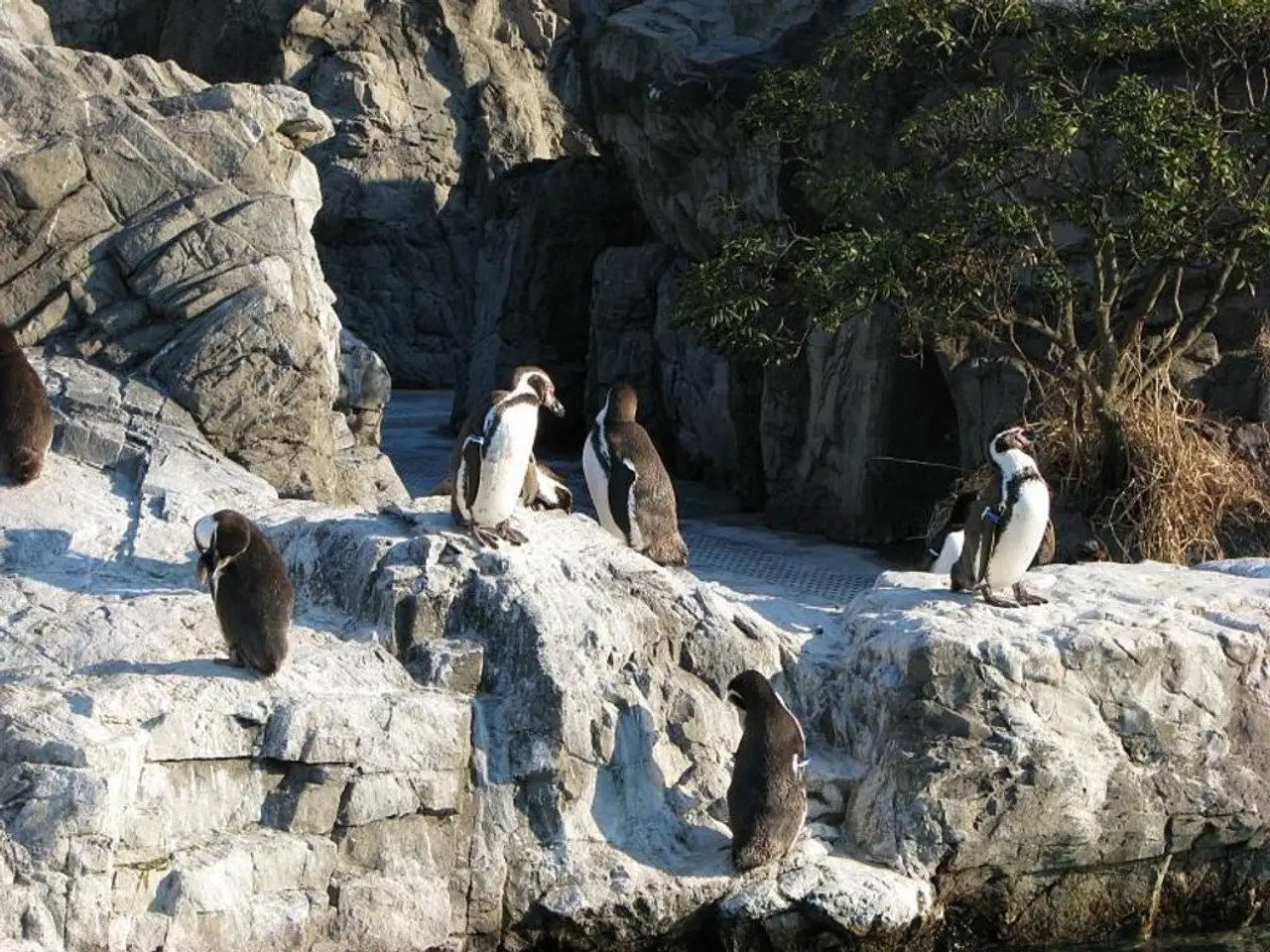Life and Occupation in Antarctica's Frozen Terrain
In the heart of the Antarctic wilderness, the Amundsen-Scott South Pole Station stands as a beacon of scientific exploration and human resilience. This Antarctic science base, dedicated to astronomy, aeronomy, cosmology, and astrophysics, is home to a diverse group of individuals who brave the harsh conditions for the sake of discovery.
Our guest writer, Kiell Kosberg, a blogger from Minneapolis, Minnesota, spent two summers at this remote outpost. In her time there, she witnessed the spirit of camaraderie that thrives amidst the cold and isolation.
The station's accommodation is far from luxurious. During the summer season, residents live in semi-cylindrical canvas and plywood structures called Jamesways. These offer visual privacy only, with each person having a curtain or door (if lucky). Staff requiring additional accommodation live in a collection of tents about a 10-minute walk from the main station.
Life in Antarctica is a balance of work and entertainment. The days are filled with tasks that no one else wants to do, yet there's excitement too. General assistants, for instance, have been known to lay dynamite to help blow up the buried original station and de-fuel military planes.
When the workday ends, the station comes alive with activities designed to keep spirits high. Sports, dance parties, language classes, photography seminars, movie nights, open mic performances, pub trivia, and science lectures are all part of the entertainment schedule.
The food in Antarctica is primarily meat and potatoes, but the galley staff makes an effort to cater to vegetarians as well. Fresh fruits, vegetables, and eggs, a special treat for the residents, are delivered every three weeks during the summer.
The weather in Antarctica is as unpredictable as it is extreme. During the summer season, the temperature can range from -50F with -80 windchill to +10F, while in the winter, the ambient temperature can drop to -100F with windchill at -125F. The sun is up 24 hours a day, and the wind always blows in the same direction. Weather restrictions limit Jamesway residents to two short showers a week.
Despite the challenges, life in Antarctica is not all work and no play. The station is equipped with facilities that support scientific research, including telescopes that take measurements of the cosmic microwave background, a neutrino detector encompassed in a cubic kilometre of ice, an NOAA laboratory that researches the cleanest air in the world, and a hydroponic growth chamber.
Common jobs available for individuals seeking seasonal work in Antarctica include a variety of environmental, logistics, technical, and support roles. These positions range from firefighting and communications to waste management and supply management. Most of these jobs require varying levels of relevant experience or certifications, often a high school diploma or GED at a minimum, with some requiring specific specialized skills or qualifications.
Kiell's top tip for someone heading to Antarctica is to bring lots of socks. She also learned to be grateful for the simple pleasures in life, like long hot showers, trees, lakes, good coffee, and quality beer. She discovered that it's possible to build great friendships in inhospitable lands, and that even in the coldest, bleakest places on Earth, there is a warm, vibrant community of individuals dedicated to exploration and discovery.
[1] National Science Foundation. (2021). Antarctic Support Contract Opportunities. Retrieved from https://www.nsf.gov/od/opp/antarctica/jobs/
[2] United States Antarctic Program. (2021). Jobs. Retrieved from https://www.usap.gov/jobs
[3] British Antarctic Survey. (2021). Vacancies. Retrieved from https://www.bas.ac.uk/careers/vacancies/
[4] United States Postal Service. (2021). Antarctica Post Office. Retrieved from https://about.usps.com/who-we-are/postal-inspectors/offices-around-the-world/antarctica.htm
[5] National Aeronautics and Space Administration. (2021). Antarctic Support Contract Opportunities. Retrieved from https://www.nasa.gov/offices/oce/about/antarctica/index.html
- Kiell Kosberg, in her blog posts, documented her adventure-travel experience at the Amundsen-Scott South Pole Station, where she lived for two summers, immersing herself in a unique lifestyle that combined work and entertainment.
- Despite the harsh conditions, the food at the Antarctic station catered to diverse dietary needs, with fresh fruits, vegetables, and eggs delivered every three weeks during the summer season.
- After her time in the Antarctic wilderness, Kiell Kosberg found that simple pleasures, like long hot showers, trees, lakes, good coffee, and quality beer, became more meaningful.
- For those interested in working in Antarctica, opportunities are available through various organizations such as the National Science Foundation, the United States Antarctic Program, the British Antarctic Survey, the National Aeronautics and Space Administration, and even the United States Postal Service's Antarctica Post Office.




